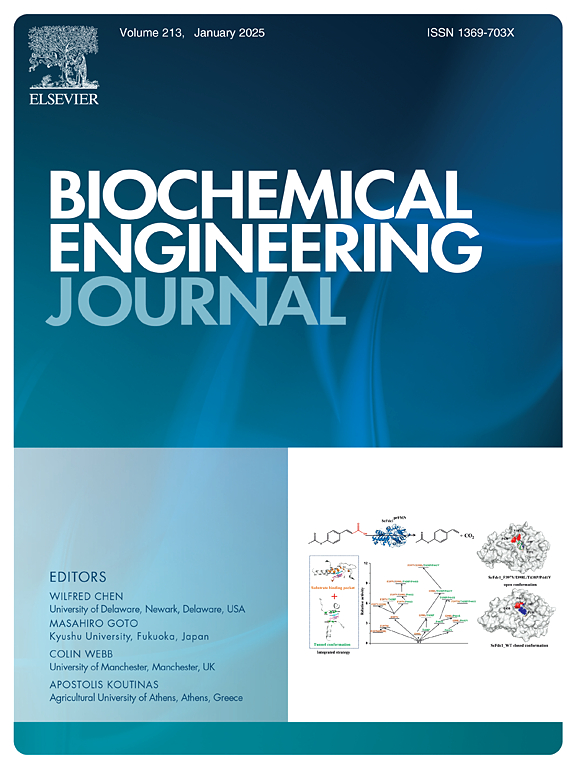Enhancing waste management and nutrient recovery: Preparation of N slow-release fertilizer using sewage sludge and its release behavior, effects on ryegrass (Lolium perenne L.) growth
IF 3.7
3区 生物学
Q2 BIOTECHNOLOGY & APPLIED MICROBIOLOGY
引用次数: 0
Abstract
Efficient recovery and utilization of the nitrogen(N) contained in sewage sludge (SS) is a key consideration in the treatment of SS. In this study, a novel sludge hydrogel sphere slow-release N fertilizer was prepared based on the N-rich property of SS, using SS as a substrate and Fe3+(extracted from drinking water sludge (DWTS)), CMC, and ATP synergistically constructed as an encapsulated skeletal material. Based on the comprehensive consideration of hydrogel sphere formation performance, mechanical strength and encapsulation effect, the optimum mass ratio for the preparation of sludge hydrogel sphere was: MSS: MCMC: MHATP: MDWTS = 300: 4: 6:0.07; the concentration of HCl-modified ATP was 2.25 mol/L, and the number of coating layers was 1. The cumulative N release rates increased gradually with increasing soil moisture content, temperature and pH. The Korsmeyer-Peppas model can well describe the N release kinetic from sludge hydrogel spheres (R2 = 0.9509). Potting experiments showed that the sludge hydrogel spheres not only promoted ryegrass growth, but also improved plant quality. The N retention mechanism of sludge hydrogel spheres mainly includes the physical barrier of coating and the adsorption of NH4+ by electronegative electrostatic gravitational force of hydrogel spheres. And the degradation and rupture of the coating in the later stage guaranteed the N release. This study provides new ideas for the preparation of slow-release fertilizers from solid waste resource utilization.
求助全文
约1分钟内获得全文
求助全文
来源期刊

Biochemical Engineering Journal
工程技术-工程:化工
CiteScore
7.10
自引率
5.10%
发文量
380
审稿时长
34 days
期刊介绍:
The Biochemical Engineering Journal aims to promote progress in the crucial chemical engineering aspects of the development of biological processes associated with everything from raw materials preparation to product recovery relevant to industries as diverse as medical/healthcare, industrial biotechnology, and environmental biotechnology.
The Journal welcomes full length original research papers, short communications, and review papers* in the following research fields:
Biocatalysis (enzyme or microbial) and biotransformations, including immobilized biocatalyst preparation and kinetics
Biosensors and Biodevices including biofabrication and novel fuel cell development
Bioseparations including scale-up and protein refolding/renaturation
Environmental Bioengineering including bioconversion, bioremediation, and microbial fuel cells
Bioreactor Systems including characterization, optimization and scale-up
Bioresources and Biorefinery Engineering including biomass conversion, biofuels, bioenergy, and optimization
Industrial Biotechnology including specialty chemicals, platform chemicals and neutraceuticals
Biomaterials and Tissue Engineering including bioartificial organs, cell encapsulation, and controlled release
Cell Culture Engineering (plant, animal or insect cells) including viral vectors, monoclonal antibodies, recombinant proteins, vaccines, and secondary metabolites
Cell Therapies and Stem Cells including pluripotent, mesenchymal and hematopoietic stem cells; immunotherapies; tissue-specific differentiation; and cryopreservation
Metabolic Engineering, Systems and Synthetic Biology including OMICS, bioinformatics, in silico biology, and metabolic flux analysis
Protein Engineering including enzyme engineering and directed evolution.
 求助内容:
求助内容: 应助结果提醒方式:
应助结果提醒方式:


